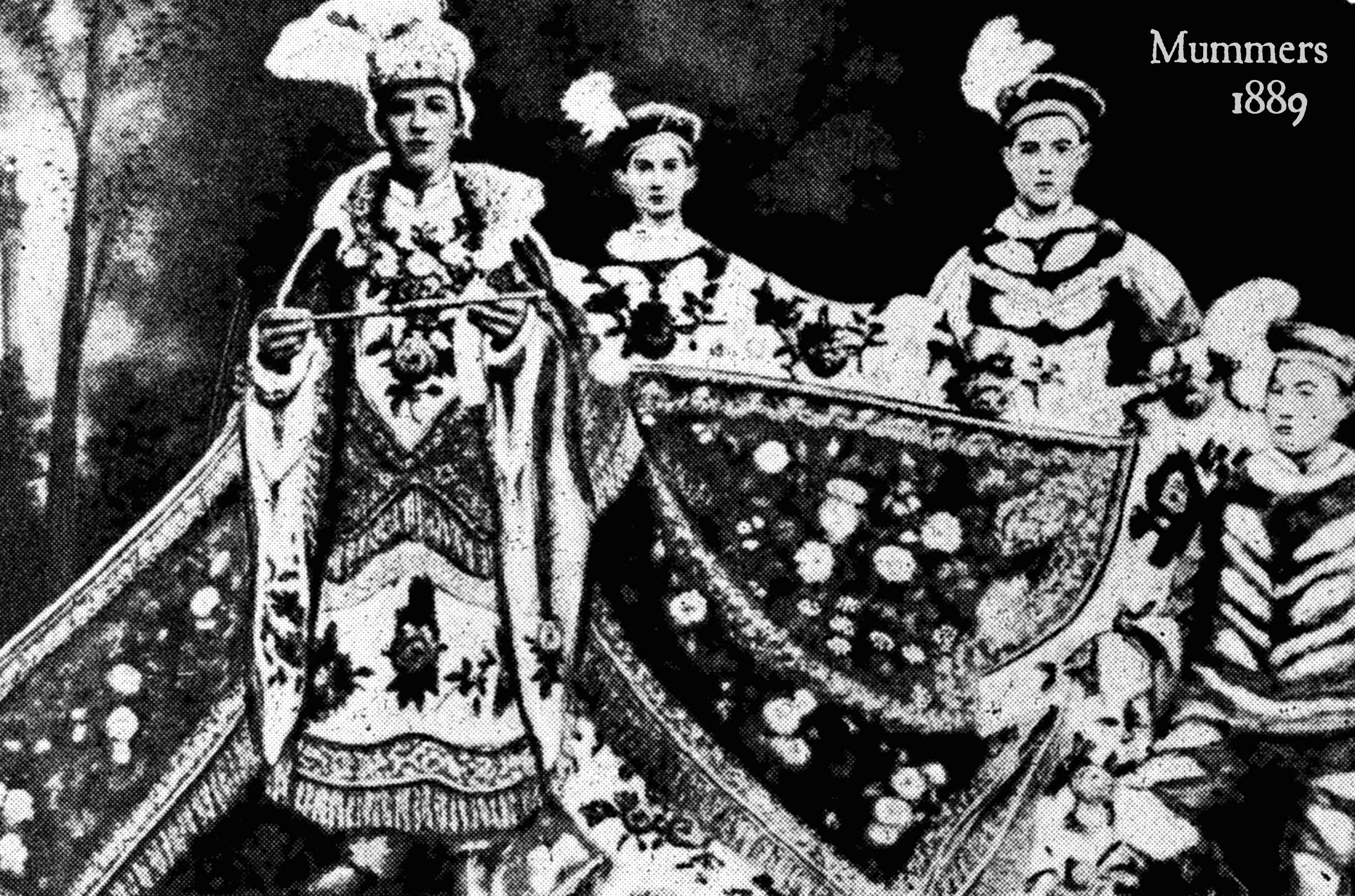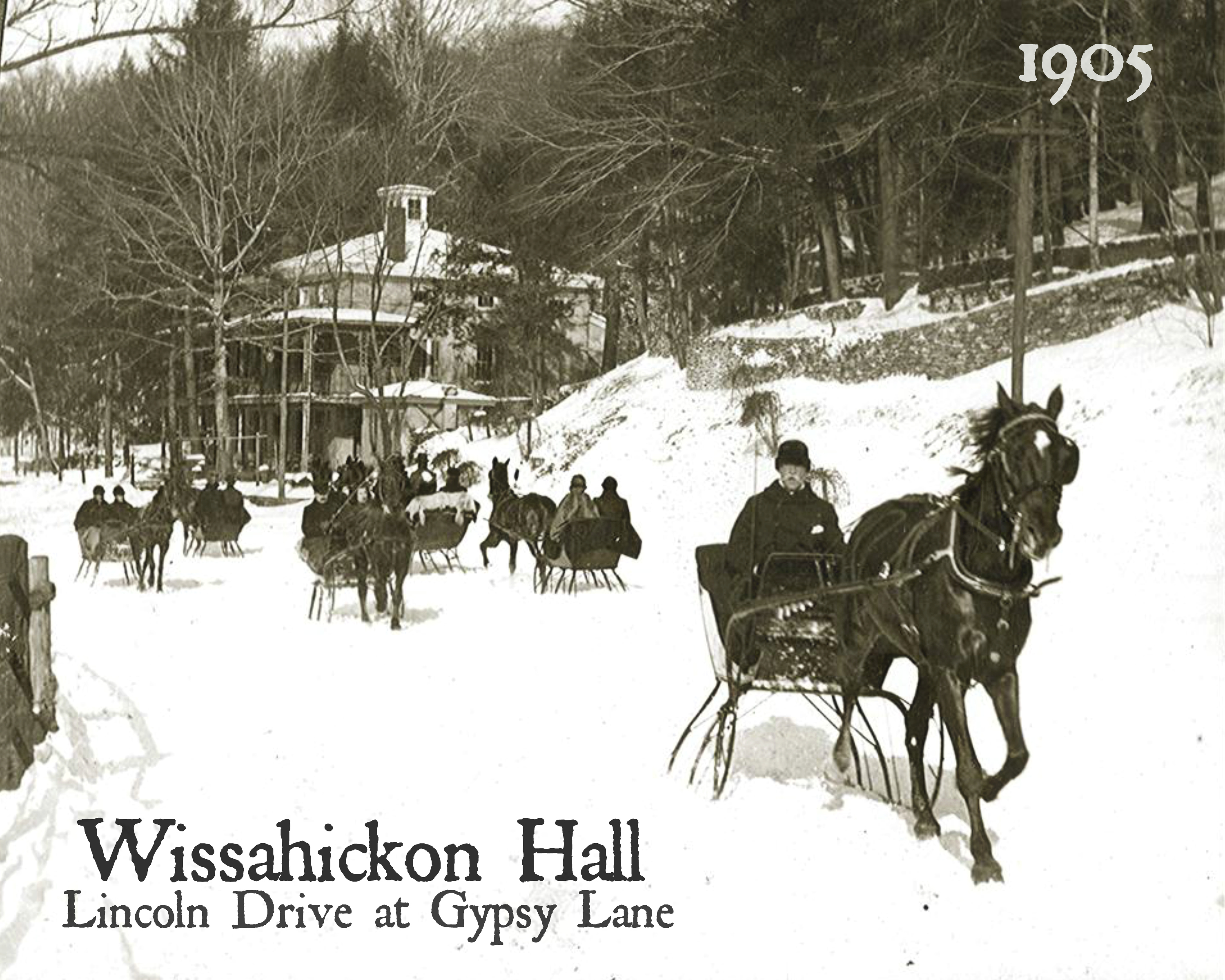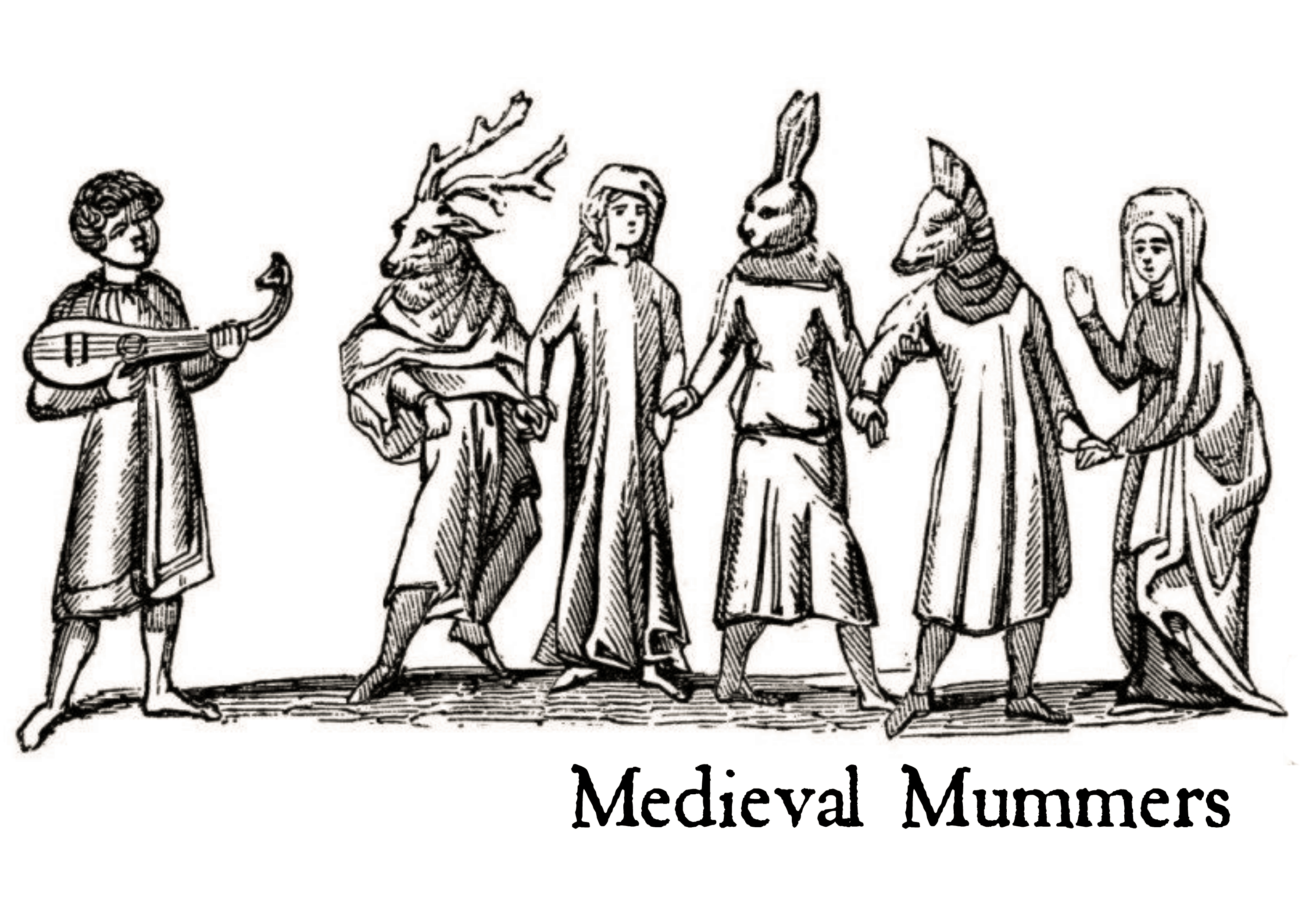
Our favorite historian explains local Holiday oddities from long ago.
(Originally published 12/4/17, updated with new links/info)
Happy Holidays, readers! As we know, the city of Philadelphia has many strange rituals, but there are a few bizarre customs that have been lost to history. Now’s a good time to re-examine those weird and wonderful traditions of yore…
“Der Belsnickel!”
The arrival of Christmas means the yearly visit from jolly old Saint Nick can’t be far behind. But did you know that Santa Claus once had a cantankerous cousin? Belsnickel, the filthy and foul anti-Santa, was a popular means of getting unruly children to behave in the nineteenth century.

Belsnickel (loosely translated to “furry Nicholas”) was a fearsome creature indeed: hairy, grimy, and morbidly obese. He came to America from his native homeland of Germany with the many German and Dutch settlers in Germantown, East Falls, and other parts of Pennsylvania. He was said to arrive at the homes of bad kids and pilfer their toys. In place of this stolen booty, Belsnickel would leave lumps of coal in their stockings, and a bundle of sticks for the parents to beat on their brats!
Belsnickel was indeed a nasty customer with a vicious disposition, delighting to flog the children and assault all who came his way. One tradition has it that parents would invite a neighbor or family friend to dress up as old Belsnickel, disguised with a mask, to come to their house on Christmas Eve. The children, frightened by fearsome visitor, would naturally seek a hiding spot. Then, Belsnickel would toss sweet treats on the ground to entice the curious rug rats out of their hiding places, only to be chased away when the fat rascal pulled out his bullwhip and cracked it overhead – loudly roaring, “Good children don’t want sweets on Christmas Eve!”

This sadistic trick was repeated until the parents felt their point was made. Then the neighbor would remove the mask and join in the holiday festivities. Even the children, now recovered from their harrowing experience, joined in on the family feast. Parts of the Belsnickel legend were merged with the Santa Clause narrative, while the more sinister elements were fortunately dropped altogether.
We can thank the Germans for many other Christmas traditions observed now, too. The early English Quaker and Puritan establishment, on the other hand, frowned upon the “heathen feast day,” even criminalizing it in certain circumstances. Interestingly, it may have been the German influence in Queen Victoria’s life that led to the loosening of restrictions on the Yule celebrations in England, and so America followed her lead.
“Oh, Dem Golden Slippers”
The act of “mumming,” or dressing up in fanciful costumes and basically making an ass of yourself on New Years Day goes back quite a ways. How far back depends on whom you ask.
Some historians believe the mumming tradition goes back to Roman Festival of Saturnalia (c. 400 BCE), where laborers would honor the God Saturn with the unrestrained frivolity one would expect from ancient Rome. The Saturnalia festival also included exchanging of gifts and visiting friends. For other scholars, the tradition dates back to ancient Greece with the legend of the deity “Momus,” the god of laughter and ridicule, whose job was to mock both gods & men.
Even earlier, the Druids of Ancient Britain celebrated the Winter Solstice, “when the nights begin to lengthen and the cold begins to strengthen.” The pagan priests of the past would honor “King Frost,” donning unusual costumes and dancing around huge bonfires. Later, under English rule, a reminiscence of Saturnalia persisted under the direction of the “Lord of Misrule,” a fantastic personage tasked with regulating “misrule,” at least as far as the king would tolerate.
The odd custom of dressing up and making merriment survived the centuries and came over to the New World with the European settlers. Of course, in conservative Quaker Philadelphia, such displays were a big no-no. As early at 1774, the city passed a law to curtail the noisy holidays demonstrations. But this ordinance was either ignored or unenforced, as the holiday revelers continued their colorful fetes unabated.
Another attempt to quash the revelries occurred in 1808 when local legislators declared an act stating that the mummers were a public nuisance, for fear that the displays were getting too political. The penalty for “masked processions” was a fine or imprisonment. Despite this legal action, the locals continued to stage their New Years antics, cleverly managing to avoid any convictions under the new act by organizing clubs and keeping their satires to more mundane matters.
One of the routines of the early mummers’ organizations was to go door-to-door and recite poems and demand “doles,” as a tribute for performers, and sometimes as a bribe to end the performance. One of the poems began thusly:
“Here comes I, old Beelzebub,
On my shoulder I carry a club,
In my hand, a dripping pan,
Don’t you think I’m a jolly old man?”
Another rhyme suggests that booze, much like today, was an integral part of the proceedings:
“Here we stand before your door,
As we stood the year before,
Give us whiskey, give us gin,
Open the door and let us in.”
One of the earliest accounts of a mummers parade was written by Dr. Henry Muhlenberg (1711-87), founder of the Lutheran Church in America. In 1839 he wrote, “Men met in the roads in Tinicum and Kingsessing, who were disguised as clowns, shouting at the top of their voices and shooting guns.”

Even before the arrival of William Penn, denizens of New Sweden would partake in “Second Day Christmas,” (December 26th) a custom of visiting friends on the day after Christmas. Gradually, they extended the period of their calls to the New Years, when masqueraders, parading the streets and lanes of “old” Philadelphia, welcomed the New Year with festivity. The Swedes were not shy about making a clamor, carrying homemade noisemakers, bells, and firing pistols (as a way of either “shooting off the old year” or bringing in the new year with a bang). This custom became known as “New Year Shooting” and would persist for centuries (but will now land you in prison).
By the late-nineteenth century, the practice of mumming, also called “Bell Snicklin’” (sound familiar?), continued to grow. According to an 1881 account, men and boys would dress themselves in fantastic costumes and roam through the Neck in South Philadelphia and other lower parts of the city all night, penetrating as far north as Chestnut Street.
Recognizing the popularity of this holiday tradition, Philadelphia merchants suggested that all of the individual groups gather together to hold one big parade. Invitations were extended to all mummers and shooters and the first official New Year’s Day Parade took place on South Broad Street in 1901. Lately the Mummers’ New Year’s Day Parade has waned a little in popularity, but it continues to be one of the city’s longest running traditions.

Seasonal Stomach Soup
Another local tradition says to eat a bowl of Pepper Pot soup — made with tripe aka cow’s stomach — on New Year’s Day to have good luck in the coming year. Pepper Pot is one of Philadelphia’s native foods, dating back to Revolutionary days. But, like catfish and waffles, its origin story was vague.
A little digging into Pepper Pot soup’s history, however, reveals this local delicacy of lore has deep indigenous roots across the ocean to another continent. Food historian and author Tonya Hopkins shared this dish’s true origins in a captivating and carefully-researched Foodizen podcast. Pepper Pot was a staple of early Philadelphian cuisine, a hearty street food doled out in piping-hot bowls for pennies on every corner by colorful (and free) West African women. No doubt some of the first known black-owned businesses in the City!
Despite the enduring myth that Pepper Pot soup was “invented” by George Washington’s cook at Valley Forge, all evidence indicates it’s a Creole/West African recipe adapted with regional ingredients and seasoned with flair: peppers, cloves, garlic, thyme. The Campbell’s version everyone is so familiar with was an “anglicized” concoction — potatoes were swapped out for cassava, for instance, and they also threw in some carrots, tomato paste and macaroni.
Hankering a taste? Campbell’s retired this flavor of canned soup in 2010, but we easily googled some promising copycat recipes here, here and here. There’s even a Pennsylvania Dutch spin. and a Pepper Pot-style Chicken soup boasting all the flavor with none of the offal. Please let us know in the comments what you think if you try any.
Eating certain foods on New Year’s Day for good luck isn’t confined just to Philadelphia. In the South it is customary to eat Hoppin’ John (a dish consisting of rice, peas and bacon) on January 1st. Whatever your palate, you’re fortunate to indulge it this time of year. Bon appétit!

Dashing Thru the Snow
In days gone by, the Valley Green was a winter wonderland, a famous resort for postcard-perfect fun. When the drive was covered with a thin layer of white, the echo of jingling sleigh bells could be heard throughout the valley, carrying jolly revelers to old-time cotillion dances in the beautiful hotel.
The creek near the Inn is wide and shallow, ideal for ice-skating too. During the frosty winter months, skating parties would congregate here in droves. After the first heavy snowfall, there was an annual contest to see which sleighing party would be the first to reach the Valley Green, with the fastest team receiving a bottle of champagne for their efforts.
Whilst swooshing through the frigid air, under the snow-covered canopy of the majestic hemlocks, the sleighing parties might be heard merrily singing:
“Ho, away for the Wissahickon!
For the dance, and the fried chicken!
Catfish! Waffles! Good hot toddy
Cheers the heart, and warms the body!
Swiftly gliding o’er the snow,
Merrily away we go!”
Back when Lincoln Drive (formerly Wissahickon Drive) was the domain of horse-drawn conveyances, the pace of traffic was much slower, and life on the creek was simpler: “The days when the horse was king, when all the old inns were a bustle of rich food and drink, and the winter afternoons were a ringle-jingle of sleigh chimes.”
Wissahickon Hall hearkens back to those idyllic days, reminding us perhaps to take time this season to enjoy the little things like moonlit nights and neighborly cheer…
Just watch out for that Belsnickel guy, he sounds like a real jerk.
A Weird & Wonderful Holiday from “History Matters!”
Joseph Minardi is a local photographer and author whose most recent book focuses on historic architecture in the East Falls/Manayunk/Roxborough area (his other books cover West & NW Philly). Joe is also the vice president of the University City Historical Society and editor-in-chief of their bi-monthly newsletter. Follow Joe on Facebook for great pics & info.
 Also: True Story: His books make great gifts! Especially the latest one, City of Neighborhoods, recently published in November 2020.
Also: True Story: His books make great gifts! Especially the latest one, City of Neighborhoods, recently published in November 2020.




I say, that’s one cracking good story!
Pure hilarity! That was an amazing story.